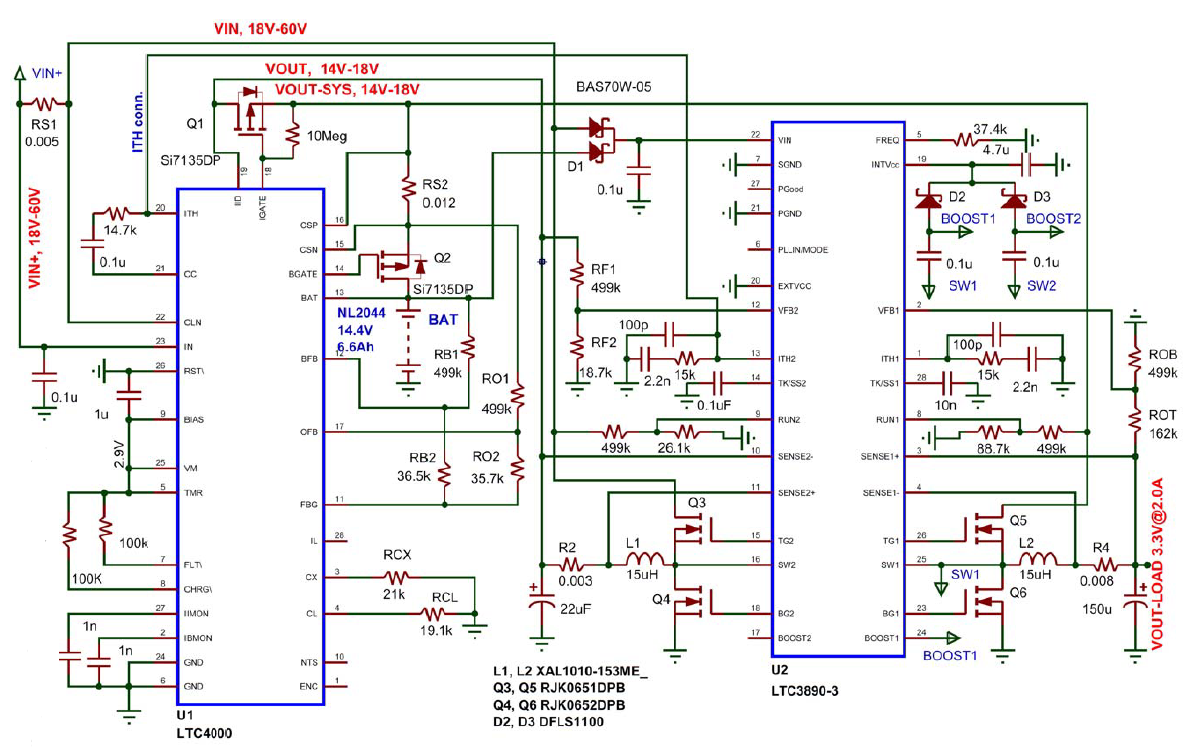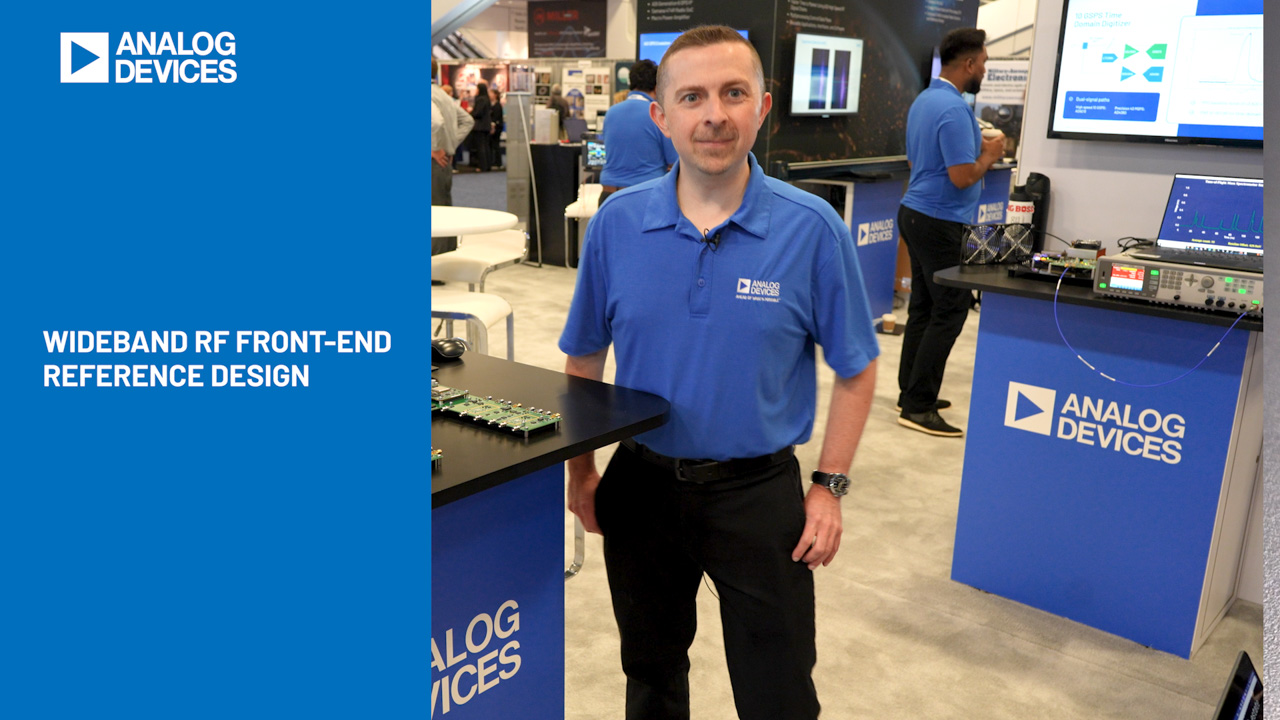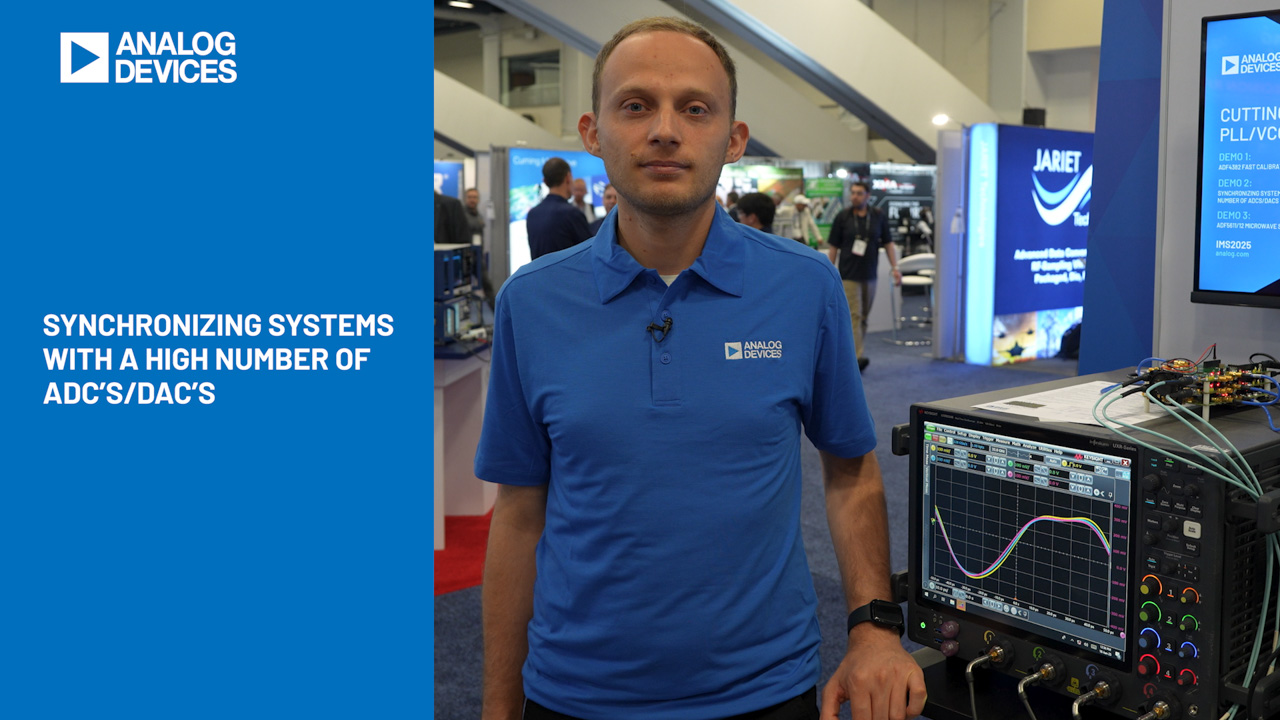LTC3890 & LTC4000 60V Input DC/DC Power Supply with Battery Backup
LTC3890 & LTC4000 60V Input DC/DC Power Supply with Battery Backup
Feb 27 2015
Introduction
Circuitry presented in this article can be very useful for designing compact power supplies and extremely beneficial for system functioning in conditions of input power interruptions. The presented solution can be embedded into uninterruptible power systems or small standalone modules. It can be successfully employed in industrial and security applications, gas and oil exploration communication systems. Wide input voltage range makes it a good fit for automotive industry, for both under the hood and cabin-placed electrical systems.
The goal of this article to describe uninterruptible power supply for 3.3V rail from input voltage range 24V-60V, when input source is available, or from the 14.4 battery pack when it is not. The power supply automatically charges the battery when input voltage is present and limits input current during the charging process.
A pair of high voltage controllers LTC3890 and LTC4000 can provide a complete solution for DC voltage source with battery backup with very wide range of working voltages. LTC3890 input voltage range is 4.5V to 60V, also LTC4000 can charge batteries rated from 3V to 60V. LTC3890 is dual, two-phase synchronous step-down DC/DC controller. One advantage of LTC3890 is extremely low 50μA no-load quiescent current. Low quiescent current alongside very low dropout operation 99% duty cycle makes the LTC3890 extremely valuable in battery powered systems. Logic level MOSFETs employed in this solution allows reduce gate related loses and increase overall system efficiency. Circuit presented in this article employs one LTC3890 output to provide fixed and accurate voltage for supplying customer load and it employs second output as variable voltage source for battery charging, which occur under control of the LTC4000. The LTC4000 is a controller designed to convert DC/DC power supplies, normally working as a voltage source, to battery chargers. LTC4000 is fully functional controller for battery charge and power management. It also provides ability to limit system input current and to reduce stress on input lines. It’s very important in some applications when the power supply has to provide energy for battery charging and power-demanding load at the same time.
Circuit Description
Figure 1. Power Supply Block Diagram
The block diagram of proposed circuit presented on Figure 1, and has a wide input voltage range: from 24V up to 60V. The circuit includes the following elements: high voltage DC/DC converter (HVDC) based on one output LTC3890 converter, actual battery charger based on LTC4000 and low voltage DC/DC converter (LVDC) based on other output LTC3890 converter. The HVDC converter provides up to 10A current at an output voltage range of 15V to 22V. The battery charger provides 4A of maximum charging current (Ich) at 16.8V (Vfl) charging voltage. The LVDC is set to deliver 2A at 3.3V.As backup battery the NL2044 Smart Li Ion Battery Pack was selected. This battery pack specified for VMAX=16.8V, VNOM=14.4 V and VCUTOFF=9.6V, with capacity 6.6Ah.
Figure 2. Power Supply Schematic
The detailed electrical schematic presented on Figure 2. It is based on high voltage step-down switching regulator LTC3890. First output LTC3890 is controlled by LTC4000 and assigned for supplying two loads: battery charger and LVDC. The control signal from LTC4000 prioritized, it sets the voltage level of the LTC3890 first output to ensure accurate battery charging. Voltage level on this output is not fixed it follows battery charging cycle. The second output of LTC3890 is LVDC, which is supplied by the first output and it provides fixed 3.3V to the load. Voltage level on this output is not dependent on system voltage, battery charging process or the source of power - input voltage or battery. Presented solution provides seamless switchover between the sources.
LTC4000 charging circuitry performs the following functions:
- Complete charging cycle of the battery. This charging cycle includes:
- Input diode for blocking reverse current flow from the battery to high voltage DC/DC converter.
- Disconnecting fully charged battery from the source of input voltage.
- Limiting input current of the entire system to the programmed value. This feature is important in systems with fuses and circuit breakers.
The designation of voltage rails is similar to Demo Circuit 1830A, LTC4000, which was used also for prototyping and bread-boarding suggested circuit. Below is a short description of the electrical rails and functionality of power train components:
- VIN+ input voltage form unregulated original voltage source 24V-60V.
- VIN input voltage to HVDC: Q3, Q4, L1. Current sense resistor RS1 limits input current to the system.
- VOUT is output of HVDC and it’s connected to drain PMOS Q1, which functions as ideal diode under control of IGATE of LTC4000. Q1 turns off when VIN voltage cut off and it disconnects HVDC from the battery pack.
- VOUT-SYS rail originated from the source PMOS Q1 and it feeds battery during the charging and LVDC.
- PMOS Q2 is part of LTC4000 PowerPath™ controller. LVDC supplied by VOUT-SYS rail and it provides power to the end load, Q5, Q6, L2 comprise power train of this converter.
- Common cathode diode D1 secures bias on LTC3782 from input voltage or battery.
When input voltage is applied, it activates the HVDC and the battery charger. The LTC3890 starts ramping-up voltage on VOUT rail. The rise of the VOUT controlled by voltage level on TRACK/SS2 pin until voltage on this pin reaches 0.8V. By that time the LTC4000 battery charger is active and it starts controlling the VOUT and VOUT-SYS levels through its own ITH pin, which is hard wired to the LTC3890 ITH2 pin. HVDC output voltage (and corresponding feedback signal at the LTC3890 VFB2 pin) is set higher than battery float (or manufacturing recommended charge voltage). This assures that in normal operating conditions only the LTC4000 battery charger regulates the output, not the LTC3890 stepdown controller. The LTC3890 IC controls the switching NMOSs Q1 and Q2 under control of the LTC4000. Because the voltage setting of the LTC3890 exceeds actual (float) voltage set by the LTC4000, error amplifier (EA) of the LTC3890 is sourcing current attempting to increase voltage on its ITH pin. In turn the LTC4000 sinks current, keeping the ITH voltage in regulation. Float voltage is set by resistor divider RB1, RB2.
If the battery voltage falls below the float, the LTC4000 analizes the conditions of the battery. If the battery is not shorted or over-discharged, it provides the programmed charge current into the battery. The charging current value is programmed by current sense resistor RS2 and resistor RCL. The LTC4000 regulates charge current until battery voltage reaches float value. Once the battery voltage reaches float value, The LTC4000 switches from constant current mode to constant voltage mode providing constant voltage during the chargingprocess. As charging cycle progresses the value of charging current gradually reduces, see Figure 5. On Figure 2 schematic, the TMR pin is tied to the BIAS node, it means that charging cycle will be terminated once charging current reduced to the programmed C/X value.
The LTC4000 also monitors the input current value. If the input current level exceeds the programmed value, the LTC4000 will reduce charging current and voltage, allowing the load connected to LVDC to function without interruption. The input current limit is programmed by current sense resistor RS1 and RIL (not shown).
When the charging current reduces below the C/X set limit, the battery is disconnected from the charging circuit, and PMOS Q2 turns off. At this point the LTC4000 regulates the output voltage above float value, to ensure that the body diode of Q2 is reversed biased and current does not flow from the battery to the load.
Circuit Description and Setting Up Both Controllers
The battery used in the article for charging and discharging is NL2044HD22. This is a Lithium Ion battery pack, combining twelve18650 size cells, assembled in (4S3P) configuration. The battery manufacturer recommends 16.8V ± 50mV charging voltage and 4A maximum charging current.
Setting up the LTC4000
Battery float voltage setup, BFB pin. Note: FBG pin is the ground return pin for the resistor dividers connected to the BFB and OFB pins. Assuming RB1 is 499k, than RB2 calculated as 36.5k, to provide 16.8V of float voltage. Battery output voltage setup, OFB pin. This voltage is set to 18V by selecting RO1 and RO2 as 499k and 35.7k correspondingly.
- Resistor RS1, pins CSP and CSN, selected as 12 mΩ to set charge current limit to 4.1A.
- Resistor RCL is set to 19.1k , it sets battery charge current to 4.0A.
- Resistor RS2, pins IN and CLN, selected as 5 mΩ to set input current limit to 10.0A.
- Resistor RCX selected as 21.0k. It’s programs charge termination current to 0.4A, by using corresponding formula in the LTC4000 datasheet.
- Pin IL is left open, which defines 50 mV of maximum voltage available for sensing the input current.
- The same 30-V Si7135DP PMOS are selected for Q1 and Q2.
Detailed description and recommendations for charging circuit components selection can be found in the LTC4000 datasheet.
Setting up the LTC3890
There are four different versions of the LTC3890 controller (LTC3890, -1, -2 & -3) the differences between versions is described in the LTC3890-3 datasheet, Table 1. In this solution, the LTC3890-3 controller was selected: it doesn’t permanently turns on bottom MOSFET in case of overvoltage, which is very important in battery powered applications. However, any of the four LTC3890 versions can be used, if specific functions are needed and important.
The OUT2 of the LTC3890, ‘Battery Input’ bus, is set by voltage divider RF1, RF2 to 22V, however, actual output voltage will never climb that high, as described above. Switching frequency is set to 200kHz, by selecting 37.4k resistor. Resistor divider RO1 and RO2 set VOUT1 to 3.3V
For selection of power train components LTC3890-3 datasheet can be used, alongside with LTspice and LTpowerCAD simulation and design tools.
HVDC Power Budget and Converter Components Selection
Power budget of the HVDC (PHVDC) combines the power needed to charge the battery PBAT and the power taken by the low voltage DC/DC converter, PLVDC, Vload, Iload. The power delivered by the LVDC to the load is defined by the nominal battery voltage Vnom. Assuming that this voltage will be present at maximum current and load
PHVDC= (PBAT + PLVDC / ηl) / ηh; PHVDC= (Vnom * Ich + Vload * Iload / ηl) / ηh
Where ηl and ηh are efficiency of LVDC and HVDC converters
Circuit Performance
Figure 3. Input Source Switchover, 0.5V/Div.
Ch 4, Red Battery Current
Ch 3, Violet, Input Voltage
Ch 2, Green, Load voltage 3.3V at 2A
Figure 3 illustrates seamless switchover of load supply from input voltage to the battery. Ch 4 (red trace) shows battery current. When input voltage is present, during the charging process, the battery is sinking current. Once the input voltage is disconnected, the battery is sourcing current (discharging). Output of LVDC, Ch 2 (green trace), does not change the circuit safely provides 3.3V at 2.0A to the load regardless of the source.
Firgure 4. Power Supply Efficiency vs. Input Voltage, Ich 4.0A, Convection Air Cooling
Efficiency curve is presented on Figure 4. The measurements were taken at constant charging current of 4.0A and constant floating voltage of 16.8V with convection air cooling (no forced air flow). The charger demonstrates very high efficiency in 97% area.
Figure 5. Power Supply Charging Voltage & Current vs Time
Changing charging current and battery voltage during the charging process is presented in Figure 5.
Conclusion
The LTC3890 and LTC4000 are a highly integrated, high voltage, high performance controllers. The multi-functional power supply with battery backup can be designed based on these two devices. This article provides a block diagram, detailed electrical schematic and calculation guidelines of this power supply.
The LTC3890-3 is a high performance dual step-down switching regulator DC/DC controller that drives all N-channel synchronous power MOSFET stages. A constant frequency current mode architecture allows a phaselockable frequency of up to 850kHz. Power loss and supply noise are minimized by operating the two controller output stages out-of-phase. The 50μA no-load quiescent current extends operating life in battery-powered systems. OPTI-LOOP® compensation allows the transient response to be optimized over a wide range of output capacitance and ESR values. A wide 4V to 60V input supply range encompasses a wide range of intermediate bus voltages and battery chemistries. Independent TRACK/SS pins for each controller ramp the output voltages during start-up. Current mode control limits the inductor current during short-circuit conditions. The PLLIN/MODE pin selects among Burst Mode operation, pulse-skipping mode, or continuous conduction mode at light loads. For versions with different and/or additional features, see the LTC3890 datasheet Table 1.
The LTC4000 is a high voltage, high performance controller that converts many externally compensated DC/DC power supplies into full-featured battery chargers. Features of the LTC4000’s battery charger include: accurate (±0.25%) programmable float voltage, selectable timer or current termination, temperature qualified charging using an NTC thermistor, automatic recharge, C/10 trickle charge for deeply discharged cells, bad battery detection and status indicator outputs. The battery charger also includes precision current sensing that allows lower sense voltages for high current applications. The LTC4000 supports intelligent PowerPath control. An external PFET provides low loss reverse current protection. Another external PFET provides low loss charging or discharging of the battery. This second PFET also facilitates an instant-on feature that provides immediate downstream system power even when connected to a heavily discharged or short faulted battery.
About the Authors
Victor Khasiev was a senior applications engineer at ADI with extensive experience in power electronics both in ac-to-dc and dc-to-dc conversion. He holds two patents and has written multiple articles. These articles are r...
Gabino Alonso is currently the director of strategic marketing for the Power by Linear™ Group. Prior to joining ADI, Gabino held various positions in marketing, engineering, operations, and education at Linear Technology, ...
Related to this Article
Products
RECOMMENDED FOR NEW DESIGNS
60V Low IQ, Dual, 2-Phase Synchronous Step-Down DC/DC Controller
RECOMMENDED FOR NEW DESIGNS
60V Low IQ, Dual, 2-Phase Synchronous Step-Down DC/DC Controller
RECOMMENDED FOR NEW DESIGNS
High Voltage High Current Controller for Battery Charging and Power Management

























